PAC TR-7 Handleiding
PAC
Niet gecategoriseerd
TR-7
Bekijk gratis de handleiding van PAC TR-7 (4 pagina’s), behorend tot de categorie Niet gecategoriseerd. Deze gids werd als nuttig beoordeeld door 280 mensen en kreeg gemiddeld 4.1 sterren uit 140.5 reviews. Heb je een vraag over PAC TR-7 of wil je andere gebruikers van dit product iets vragen? Stel een vraag
Pagina 1/4

Pacific Accessory Corporation - 1502 S. Santa Fe Street, Santa Ana, CA 92705
www.pac-audio.com • techsupport@pac-audio.com
Page 1
1-5-05
S/W 1.2.4
The TR-7 is a universal trigger output module that has various user
programmable features combined into one unit. The user programmable
features are stored in non volatile memory. When triggered, the TR-7
can turn on the outputs as a pulsed, latched or a timed output. There
are two inputs, the GREEN wire is a positive input that senses voltages
as low as 0.8 volts and the BROWN wire is a negative input, both are
tied together internally which is, essentially, ONE trigger input.
There are 3 separate outputs, the BLUE wire is a positive 12 volt
output which has a maximum current rating of 2 amps. The WHITE
and ORANGE wires are negative outputs which have a maximum of
current rating of 150 milliamps. The timed output is user adjustable and
can be programmed up to 4 minutes and 15 seconds. What makes the
TR-7 unique is that it does not use a potentiometer to adjust the timer. The timer is set by programming TR-7 minutes and seconds with
a number. The time saved is accurate to the second +7% - 8%.
#1: Low voltage trigger. Supplies a 12 volt remote output for an aftermarket
amplifier when used with a stock head unit that does not have a remote
output. Use the TR-7 to supply a 12 volt output from a 5 volt remote
source, like from Ford radios. Use on some vehicles that have a
negative antenna output and convert to a positive output.
#2: Alpine video bypass. This will automatically bypass Alpine’s flip out monitor
video procedure. WARNING! It is dangerous (and illegal in most
states) for the driver to watch the TV/Video monitor while driving
the vehicle. The driver may be distracted from looking ahead and
an accident could occur. Install the TR-7 only in RV and Marine
applications where there is no parking/hand brake to interface to.
Do not install the TR-7 where the driver may be able to view the
monitor when driving.
#3: Latch and unlatch output from a pulsed input. Turn on headlights, neon
lights or radio from an alarm with a momentary output or from a
momentary switch.
#4: Double pulse output. Pulses outputs twice when trigger from a constant or
pulsed signal. Use for alarm applications where the unlock wire needs 2
pulses to unlock all doors.
#5: Closed loop circuit. Good for monitoring trailers on hitches by triggering an
aftermarket alarm if the trailer is disconnected from the vehicles hitch.
Also monitors stereo equipment in vehicles.
#6: Pulse extender/Delayed turnoff. Upon a constant or pulsed trigger, the
TR-7 will turn on the outputs. As soon as the trigger is disconnected,
turned off or at the end of a pulse, the timer will count up to the number
of seconds recorded, at which time the outputs will turn off. Good for
turning on headlights at night for convenience. Extend alarms output
from 1 second to 3 seconds for Mercedes vacuum door locks. (rev.2)
#7: Horn honking output. On older, aftermarket alarms, it may have been
difficult to disarm the alarm with the RF remote when the horn was
honking. This will give you a 2 second delay between honks, allowing
you to disarm the alarm. Unique horn honking to distinguish your
vehicle from others. Program between 1 and 5 honks before the 2
second delay.
Black (-) Chassis Ground
Green (+) 0.8-16 Volts Input Trigger
Red (+) 12 volts constant/switched
Brown (-) Input Trigger
Blue (+) 12 volt output-2 amps max
White (-) Output-150 ma. max
Orange (-) Output-150 ma. max
MODEL TR-7
Universal Trigger Output Module
OFF-ON
Programming switch must be turned off
after the TR-7 is programmed!
#8: Linear Actuator Controller. Open/close amplifier racks from a momentary
source like from a alarm’s negative output. Sequence is : Start, Stop,
Reverse, Stop.
#9: Door lock Pulse generator. Good for automatically locking and unlocking
door locks when ignition is turned on and off.
#10: Channel Splitter. Split 1 channel from an alarm to 2 outputs. Both outputs
are user programmable for pulse, latched or timed output.
#11: Pulses to constant output. Counts a number of user programmable
pulses within a user programmed time to turn on the outputs. Good for
triggering Vehicle tracking devices that need a constant trigger but the
factory alarm only has a pulsed output when triggered like flashing lights
or horn honking. Keeps factory alarm from triggering Vehicle tracking
device when arming or disarming.
#12: 3 timers in 1. Upon a constant trigger, all 3 outputs are user programmable
to delay before turning on outputs or turning on instantly then delay
before turning off outputs. Good for situations where you need more
than 1 timer but on a different timer period, without having multiple
modules.
#13: Pulses to latch/unlatch outputs. Upon a number of pulses within a user
programmable time, the outputs will latch. Upon a number of pulses
within a user programmable time the second time, the outputs will
unlatch. You may program how many pulses to latch and unlatch. Use to
turn on aftermarket driving lights by using existing parking light switch.
#14: Pulses to pulse output. Upon number of pulses within a user programmable
time, the outputs will pulse. Example, if you programmed to see 4
pulses, for every 4 pulses the TR-7 sees within a 5 second time period,
the outputs will pulse once.
#15: Pulses to timed output. Upon a number of pulses within 5 seconds, the
outputs will turn on and delay for the amount of programmed time, then
the outputs will turn off.
#16: Latching outputs #2. Good for turning on 2 sets of driving lights with one
momentary switch. 1st pulse will latch one wire. 2nd pulse will unlatch
first wire and latch second wire. 3rd pulse will latch both wires. 4th pulse
turns off both wires.
The basic descriptions below are the features that can be done with the TR-7. Each feature is assigned a Feature#. Please make note of which Feature# you are
going to use. Other unique projects/installs can also be derived from the TR-7, so PAC leaves it to the installer’s imagination to experiment with these features.
Basic Description of Features
TR-7
Universal Trigger Output Module
Pacific Accessory Corporation

Page 2
Pacific Accessory Corporation - 1502 S. Santa Fe Street, Santa Ana, CA 92705
www.pac-audio.com • techsupport@pac-audio.com
#9: Connect the GREEN wire to a true ignition wire of the vehicle. Connect the WHITE
wire to the lock relay and the ORANGE to the unlock relay. When the ignition is turned
on, the WHITE wire will pulse once after a 5 second delay. When the ignition is turned
off, the ORANGE wire will pulse once. The ORANGE wire is user programmable not
to pulse when the trigger is disconnected.
#10: Connect the BROWN wire to the alarm’s negative output. Connect the WHITE wire
to the first device being controlled and the ORANGE wire to the second device being
controlled. Use relays if the devices draw more than 150 milliamps. After a single
pulse from the alarm within 3 seconds, the WHITE wire will activate. After two pulses
within 3 seconds, the ORANGE wire will activate. Each wire is user programmable
for a pulse, latch or a timed output. Please note that if any one of the two wires are
programmed for a timer output, the TR-7 will not respond until the timer is finished.
#11: Connect the GREEN or BROWN wire to the factory alarm’s flashing light or horn
output. Connect the BLUE or WHITE wire to the vehicle tracking device trigger input.
You can program the amount of pulses the TR-7 sees within a user programmable
number of seconds to trigger the vehicle tracking device. Example; if the factory alarm
flashes or honks the horn a maximum of 2 times when arming or disarming, then you
may program the TR-7 to see a minimum of 4 pulses within a 5 second period to
trigger the TR-7 which will turn on the BLUE and WHITE wire. As long as the pulses
continue, the TR-7 BLUE or WHITE wire will stay on.
#12: Connect the BROWN or GREEN wire to a source that stays constant when turned
on. Connect the BLUE, WHITE and ORANGE wire to the devices being controlled.
Both outputs are user programmable to delay before turning on the outputs or
programmable to turn on outputs instantly, then delaying before turning off. You do
not need to use all the outputs, but during programming you do need to program all
features and timers before you can automatically exit programming.
#13: Connect the GREEN or BROWN wire to a momentary or pulsed source. Connect the
BLUE or WHITE wire to a device being controlled. Upon seeing a number of pulses
within a number of seconds the first time, the outputs will latch. After seeing a number
of pulses within a number of seconds the second time, the outputs will unlatch. You
may program how many pulses the TR-7 needs to see to latch and unlatch the
outputs. turn on and off your parking lights 4 times within 5 seconds to turn Example;
on aftermarket lights. Turn on and off 3 times within 5 seconds to turn the aftermarket
lights off.
#14: Connect the GREEN or BROWN wire to a pulsed output source. Connect the BLUE or
WHITE wire to a device being controlled. Upon seeing a user programmable number
of pulses within a user programmable number of seconds, the BLUE and WHITE
outputs will pulse once. Example, if you programmed the TR-7 to see 4 pulses within
7 seconds, then for every 4 pulses the TR-7 sees within 7 seconds, the outputs will
pulse once.
#15: Connect the GREEN or BROWN wire to a pulsed output source. Connect the BLUE
or WHITE wire to a device being controlled. Upon a user programmable number
of pulses the TR-7 sees within 5 (non adjustable) seconds, the BLUE and WHITE
outputs will turn on and delay for a user programmable time, then the outputs will turn
off.
#16: Connect the BROWN or GREEN wire to a momentary source. Connect the BLUE or
WHITE wire to the device being controlled. On the first pulse the TR-7 receives, the
WHITE wire will latch on. On the second pulse the WHITE wire will unlatch and the
ORANGE wire will latch on. On the third pulse, the WHITE and ORANGE wires will
latch on. On the fourth pulse both the WHITE and ORANGE wire will turn off.
#1: On a constant trigger, both the BLUE and WHITE wire will activate after a one second
delay. If you are using the TR-7 to turn on an amplifier, you can connect the GREEN
wire to any (+) speaker wire lead and the BLUE wire to the amplifier’s remote input.
If you need to invert a negative to a positive output, connect the BROWN wire to the
source and the BLUE wire to the device that needs to see a positive signal to activate.
The BLUE wire can connect directly to 1 to 4 devices that have a remote trigger input.
If the total current draw of the devices exceed 2 amps, use a relay to supply 12 volts
at a higher current.
#2: This will automatically bypass Alpine’s video procedure. After programming (detailed
programming on page 3), connect the GREEN wire to the Alpine’s remote wire, the
BLUE wire to the Alpine’s foot brake input wire, the WHITE wire to the Alpine’s parking
brake input wire. In this configuration, relays are not needed. Do not connect any other
sources to the WHITE or BLUE wires of the TR-7. Connect the RED wire to vehicle’s
accessory 12v. Note: This feature is factory set. Keep switch to off position and
wire according to above. No programming is neccessary unless changed.
WARNING! It is dangerous (and illegal in most states) for the driver to watch the TV/Video
monitor while driving the vehicle. The driver may be distracted from looking ahead and an
accident could occur. Install the TR-7 only in RV and Marine applications where there is no
parking/hand brake to interface to. Do not install the TR-7 where the driver may be able to
view the monitor when driving.
#3: Connect the BROWN or GREEN wire to a momentary source, like from a switch or
alarm’s output. When triggered, the BLUE and WHITE wire will turn on and stay on.
When triggered a second time, the BLUE and WHITE wires will turn off. Use the BLUE
or WHITE wire to activate a relay to turn on lights, neon, or any other source that
draws high current.
#4: Connect the BROWN wire to the alarm’s unlock output and connect the BLUE wire or
WHITE wire to the unlock wire of the vehicle that needs to see 2 pulses to unlock all
doors.
#5: Extend the BROWN wire and connect to the chassis of the trailer or the back of stereo
in such a way that the BROWN wire must be cut or disconnected from the chassis, if
a theft is in progress. The BROWN wire must be connected to a good chassis source
so that it will not false trigger. Connect the BLUE or WHITE wire to an alarm or other
alarming device trigger input. You may program a delayed time before the outputs will
turn on when the BROWN wire is disconnect from the chassis.
#6: Connect the BROWN or GREEN wire to a pulsed or constant source. Connect the
BLUE or WHITE wire to the device that you want to activate for a time period. You may
program a delayed off time. The delay will not start until the end of the pulse or when
the constant trigger is off.
#7: Connect the BROWN or GREEN wire to the siren output of the alarm. Connect the
BLUE or WHITE wire to a relay that will supply a positive or negative output to the horn
wire. When triggered, the TR-7 will delay 2 seconds before honking the horn.
#8: Although this is not a full Linear Actuator Controller (does not have a brake wire),
the TR-7 will brake correctly when used with limit switches. If wired according to the
diagram on the diagram page, the linear actuator will function and work correctly.
Connect the BROWN or GREEN wire to a momentary source. When pulsed the first
time the WHITE wire will latch on, then 1.5
seconds later the BLUE wire will latch on
(this will allow time for the limit switches to turn off) . On a second pulse both the BLUE
and WHITE wire will turn off. On a 3rd pulse the ORANGE wire will latch on, then 1
second later the BLUE wire will latch on.
Detailed Description and Wiring Instructions
PLEASE READ!
1. Connect the BLACK wire to chassis ground.
2. Connect the RED wire to switched +12volts. (After programming, the RED
wire can be left on switched or wired to constant +12volts)
3. Go to Page 3 and program the TR-7 with the selected Feature # you need.
Return here to finish wiring the TR-7.
Feature Feature#
Blue White Orange Blue White Orange Blue (+) White (-) Orange (-)
Low voltage trigger 1
Alpine video bypass (factory default) 2
Latching on / off outputs 3
Double pulse 4
Closed loop trigger 5
Pulse extender 6
Horn honk 7
Linear actuator controller 8 x x x
Doorlock pulse generator 9 unlock = 1, no unlock = 2 x x
Channel splitter 10 pulse = 1, latch = 2, timer = 3 pulse = 1, latch = 2, timer = 3 T T x x
Number of pulses for constant output 11
3 programmable timer outputs on constant trigger 12 delayed on = 1, delayed off = 2 delayed on = 1, delayed off = 2 delayed on = 1, delayed off = 2 T T T x x x
Number of pulses to latch / unlatch output 13
Number of pulses to pulse output 14
Number of pulses for timer output 15
Latching outputs #2 16 x x
T
T
Tcount number of pulses for timer output
count number of pulses for trigger
count number of pulses to pulse output
T
T
count number of pulses to pulse output
1. Count # of pulses to latch output • 2- Count # of pulses to un-latch output
Timer Outputs usedFeature Select
T
M
M
M
M
M
M
M
M
M
M
M
4. Connect the BLUE, WHITE and ORANGE wires to relays as indicated below
for the selected Feature #. !! Do not connect the BLUE, WHITE or ORANGE wires
to devices directly unless instructed.
5. Always use a fuse when using relays with a +12 volt source!
Feature Chart
M T = Married wires. Both wires either pulse, latch/unlatch or time at the same time. = Timer. Indicated wires must be programmed with a time.

Pacific Accessory Corporation - 1502 S. Santa Fe Street, Santa Ana, CA 92705
www.pac-audio.com • techsupport@pac-audio.com
Page 3
Seconds in ones place: The LED will flash rapidly 3 times indicating you
need to program the number of seconds in the ones place. ‘Pulse’ the
trigger wire the number of seconds needed. After 3 seconds the LED will
flash the number of seconds recorded in the ones place. If you program for
10 or greater, the TR-7 will default to 9 seconds for the ones place. If you
need zero seconds in the ones place, do nothing and wait the 3 seconds.
End of timer: The LED will flash rapidly 4 times indicating that the timer is
finish recording.
Repeat step 3 if more than one timer has to be recorded, otherwise go to
step 4.
If you want 36 seconds for a timer, ‘Pulse’ the trigger wire one Example 1;
time. The LED will flash rapidly 1 time, wait 3 seconds and 0 minutes will
be recorded. The LED will flash rapidly 2 times, ‘Pulse’ the trigger wire 3
times, after 3 seconds the LED will flash 3 times indicating 3 was recorded
for the tens place. The LED will flash rapidly 3 times, ‘Pulse’ the trigger
wire 6 times and after 3 seconds the LED will flash 6 times indicating 6 was
recorded for the ones place.
If you want 2 minutes and 25 seconds for a timer, ‘Pulse’ Example 2;
the trigger wire one time. The LED will flash rapidly 1 time, ‘Pulse’ the
trigger wire 2 times, after 3 seconds the LED will flash 2 times, indicating
2 was recorded for the minutes place. The LED will flash rapidly 2 times,
‘Pulse’ the trigger wire 2 times, after 3 seconds the LED will flash 2 times
indicating 2 was recorded for the tens place. The LED will flash rapidly
three times, ‘Pulse’ the trigger wire 5 times, after 3 seconds the LED will
flash 5 times indicating 5 was recorded for seconds in the ones place.
Note: The maximum time that can be set is 4 minutes and 15 seconds.
If you go beyond the maximum time, the TR-7 will automatically use 4
minutes and 15 seconds as a time. In Feature # 10, if you did not program
for any timers, then the ‘Timer’ section will automatically be skipped.
4. After all options and/or timers are programmed, the LED will flash rapidly
for 3 seconds, indicating that programming is finished. Slide the switch
to the OFF position. If you make a mistake during programming, you will
need to start over from step 1.
5. Return to the previous section to finish wiring the TR-7.
Programming the TR-7 with a Feature Number
1. Select a feature you want from the chart and write down the Feature above.
Slide the switch to the on position and apply 12 volts to the TR-7 RED
wire. ‘Pulse’ the trigger wire the number of times of the selected Feature
number. Wait 3 seconds, and the LED will flash the amount of times you
‘Pulsed’ the trigger wire saving that Feature number into memory.
note: If you are doing Feature# 1 through 4, 8 or 16, you may go
directly to step #4 after you do step #1.
2. When selecting a feature, ‘Pulse’ the trigger wire once to select the 1st
option, twice within 3 seconds to select the 2nd option, or 3 times within 3
seconds to select the third option. Example; Feature# 9, 10, and 12 need
an option selected.
- OR -
If you need to select how many pulses you need to trigger an event, ‘Pulse’
the wire the number of times needed. Example; Feature# 7, 11, 13, 14,
and 15 need a number of pulses to trigger an event.
After 3 seconds, the LED will flash the amount of times you ‘Pulsed’ the
trigger wire telling what option you selected or how many pulses the TR-7
needs for a triggered event. Repeat if other wires need to have an option
selected. After all remaining options are programmed in the ‘Feature
Select’ ‘Timer’ section, the TR-7 will automatically go to the section.
3. In the ‘Timer’ section in the chart, where a ‘T’ is indicated, you will need to
program a time for that specific wire(s). If in the section ‘Feature Select’
you programmed for a pulse or latched event for that color wire, then the
timer for that wire will be automatically skipped because the timer is not
needed.
To start programming the time needed, ‘Pulse’ the trigger wire one time to
start the timer...
Minutes: The LED will flash rapidly 1 time, indicating you need to program
the number of minutes. ‘Pulse’ the trigger wire for the number of minutes
needed. After 3 seconds the LED will flash the number of minutes recorded.
If you program for 5 or greater, the TR-7 will default to 4 for minutes. If you
need zero minutes, do nothing and wait the 3 seconds.
Seconds in tens place: The LED will flash rapidly 2 times indicating you
need to program the number of seconds in the tens place. ‘Pulse’ the
trigger wire the number of seconds needed. After 3 seconds the LED will
flash the number of seconds recorded in the tens place. If you program for
6 or greater, the TR-7 will default to 5 for the tens place. If you need zero
seconds in the tens place, do nothing and wait the 3 seconds.
Please READ! Many technical phone calls can be avoided by reading this section thoroughly.
• In the instructions below, when asked to ‘Pulse’ the trigger wire, this will indicate to temporarily ground the BROWN wire to chassis ground and then un-
grounding it. Each time you do this, the LED indicator will turn on and off.
• All ‘Feature Select’ and ‘Timer’ section in the chart MUST be programmed from a left to right order. Even if you do not need all the outputs of the TR-7, an
option or time must be set for that wire(s) in order for the TR-7 to finish programming.
• If you do not understand this written part of the instructions, you can use the flow chart on page 4. The flow chart will help you program the TR-7 step by
step.
Feature Number:___________
write Feature number here
Programming for Alpine Bypass
1. Connect the black wire to chassis ground and connect the red wire to 12v accessory.
2. Slide the TR-7 switch to the ON position and turn the ignition on.
3. ‘Pulse’ the brown wire 2 times and wait 3 seconds. The LED will flash 2 times for confirmation. The LED will rapidly flash for 3 seconds.
4. Slide the switch to the OFF position.
5. Connect the green wire to the Alpine’s blue/wht wire, the blue wire to the Alpine’s footbrake input and the white wire to the Alpine’s handbrake input.
6. The TR-7 will automatically bypass the video safety when the radio is turned on.
36 seconds -or- 0:36 = min tens ones
0 3 6
2 minutes and 25 seconds -or- 2:25 = min tens ones
2 2 5
Product specificaties
| Merk: | PAC |
| Categorie: | Niet gecategoriseerd |
| Model: | TR-7 |
Heb je hulp nodig?
Als je hulp nodig hebt met PAC TR-7 stel dan hieronder een vraag en andere gebruikers zullen je antwoorden
Handleiding Niet gecategoriseerd PAC
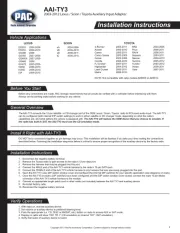
2 Mei 2025

10 Maart 2025
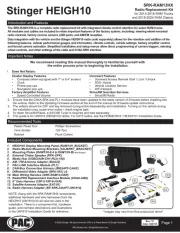
10 Maart 2025

19 Februari 2025

19 Februari 2025

19 Februari 2025
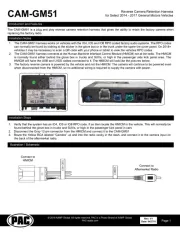
19 Februari 2025

19 Februari 2025

19 Februari 2025

19 Februari 2025
Handleiding Niet gecategoriseerd
- Redback
- Beemoo
- Aerotec
- Lowepro
- Crest Audio
- Arzum
- Esperanza
- Nautilus
- Camry
- Durex
- Alluserv
- Motorola
- ClimeMET
- Bernina
- Philos
Nieuwste handleidingen voor Niet gecategoriseerd
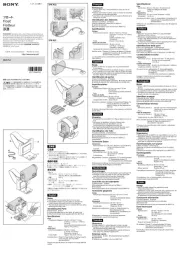
16 September 2025
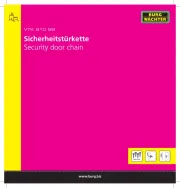
16 September 2025
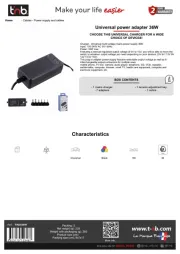
16 September 2025

16 September 2025
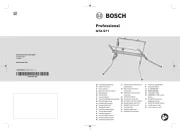
16 September 2025
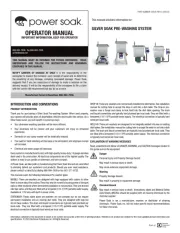
16 September 2025
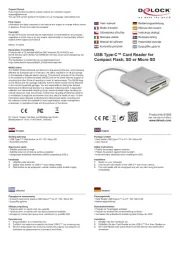
16 September 2025

16 September 2025

16 September 2025
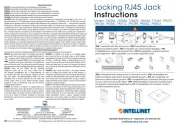
16 September 2025